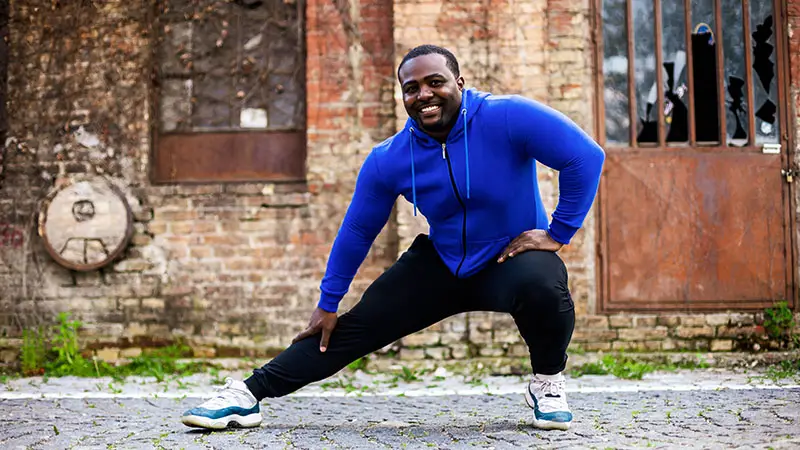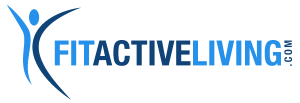Contents
- Single Leg RDL Benefits
- Single Leg RDL Benefit #1 – Engages Posterior Muscles
- Single Leg RDL Benefit #2 – Builds Hip Stability & Strength
- Single Leg RDL Benefit #3 – Improves Balance
- Single Leg RDL Benefit #4 – Increases Core Strength
- Single Leg RDL Benefit #5 – Encourages Joint Mobility & Flexibility
- Single Leg RDL Benefit #6 – Adds Variety To Your Workout
- Single Leg RDL Benefit #7 – Corrects Strength Imbalances
- What is Single Leg RDL?
- How To Do a Single Leg RDL
- Common Single Leg RDL Mistakes
Single Leg RDL Benefits
With building muscles, there are so many exercises that work all different parts of your body. It’s hard to know what exactly to do when you get to the gym! But it doesn’t have to be this way.
Whenever I plan on heading to the gym, I start by thinking about what muscle groups or part of my body I want to focus on. Am I going to do a full-body workout and do a little of everything? Or am I going to have a “leg day” or an “arm’s day”? From there, I select my exercises based on my focus for the day.
If you are going to have a leg day or want an exercise focusing on increasing your leg strength, Romanian deadlifts should definitely make your list! It actually made our top 10 list of the best glute and hamstring exercises!
Romanian deadlifts (RDLs) offer a ton of benefits and actually have a couple of different variations. For today, we’re going to focus on my favorite variation, the single leg RDL. This unilateral exercise is a powerhouse of a move, so let’s explore the 7 single leg rdl benefits and why you should start incorporating them into your workouts…
Single Leg RDL Benefit #1 – Engages Posterior Muscles

Posterior chain muscles are the muscles that are on the backside of your body. These muscles are essential for strength training and balance, yet they are often harder to activate. A single leg RDL, however, does a fantastic job of engaging posterior muscles, which include…
Hamstrings
Hamstrings are a group of three muscles that run from the bottom of your glute to just behind your knees. They are essential for hip flexion and knee movement and mobility, and they are often overlooked in the gym. Hamstrings are the key to injury prevention and improved performance and single leg RDLs will help you achieve just that.
As you’ll see in the description of how to do the exercise below, there’s a point in the movement where you hinge forward. This hinging motion is where your hamstrings are most activated. If you don’t do this exercise often, you’re going to feel it when you do!
Glutes
When I think about doing a glute exercise, I often think about doing squats and lunges. They have some amazing benefits and definitely target your glutes, but it’s important that you mix it up if you want to see results.
Other single leg RDL benefits are glute activation at two important points in the exercise. Similar to when it targets your hamstrings, it activates your glutes when you hinge forward. They’re also activated when you are pulling your body back up to the standing position. Single leg RDLs are a great way to mix it up while also targeting your glutes and building those muscles.
Lower Leg
Single leg Romanian deadlifts don’t just target the upper posterior muscles, they also can engage your lower leg muscles as well. Because this is a unilateral exercise, you will lift one leg while the other is planted on the ground. It activates your lower leg muscles in a couple of different ways. It is first activated in the leg that you are pulling up into the air as you hinge forward. The leg planted on the ground during this movement also activates your lower leg (calves and ankles) by keeping your body stable.
Single Leg RDL Benefit #2 – Builds Hip Stability & Strength
Speaking of stability, another enormous benefit of incorporating a single leg RDL into your routine is that it will build your hip stability and strength. As I mentioned above, this movement requires one leg to be in the air while the other is planted firmly on the ground. By doing this properly, you are requiring your hips to maintain their position. This is a significant challenge to our hips, which is why it will help you reinforce its stability and add strength.
Single Leg RDL Benefit #3 – Improves Balance

Your hips aren’t the only thing stabilizing with single leg RDLs, your whole body is! When we’re young, we do all kinds of things to work on our balance. We climb trees, pretend sidewalk curbs are balance beams, play hopscotch and so on. But, as we grow older, we work on our balance less and less while the importance of having a good balance becomes more and more.
One in four adults over the age of 65 fall each year because of a lack of balance, lower body weakness, or other issues. While you may not be in this age bracket yet, it’s important to do exercises that require you to work on your balance now. The better your balance is, the less likely you may struggle with falling or other issues in the future.
Thankfully, single leg RDLs are a great way to improve your balance since the exercise is all about building your strength and alternating your balance onto one foot and then the other.
Single Leg RDL Benefit #4 – Increases Core Strength
Many people immediately think about doing crunches and sit-ups for increasing core strength. However, there are actually all kinds of different ways to increase your core strength, and one of those ways is through single leg RDLs. Because of the unilateral nature of a single leg RDL and having to work to keep your balance throughout the movement, your core is constantly working. When done correctly, your core will be engaged constantly to keep you from wavering.
Single Leg RDL Benefit #5 – Encourages Joint Mobility & Flexibility

Along with these improvements in your strength and balance, another single leg RDL benefit is its ability to encourage joint mobility and flexibility. Your hips, knees, ankles, and back will reap the benefits of this exercise as well.
I’ve discussed the mobility benefits with your hips and improving your ankle mobility and stability. But the unilateral movement also helps with your knee mobility! The reason it strengthens your back is the hinge motion, in the lowering and then raising your back. You can gain this benefit from a traditional Romanian deadlift as well!
Single Leg RDL Benefit #6 – Adds Variety To Your Workout
My second favorite benefit for doing single leg Romanian deadlifts is that it simply changes things up! Your body is so complex, and it learns our patterns and routines, even when working out! Throwing in single leg RDLs will keep your workouts exciting and keep your body working hard to get the results that you desire!
Single Leg RDL Benefit #7 – Corrects Strength Imbalances
While adding variety is my second favorite benefit of single leg RDLs, correcting strength imbalances is my favorite. The reason this benefit is my favorite is that I’ve seen it firsthand!
As a college athlete, I had very strong quads, but weak hamstrings. This led to back issues and other struggles. When I started incorporating RDLs and other exercises such as this one to strengthen my posterior muscles, I noticed my back pain decreasing.
Along with this, the single leg RDL can also correct strength imbalances in your legs. For example, if one leg is weaker than the other, you will notice it with this workout, since you’re using one at a time.
What is Single Leg RDL?
The single leg Romanian deadlift is an exercise where you hinge your hips while balancing on one leg, lowering your upper body and simultaneously raising your other leg behind you. Do this until your torso and leg are parallel to the floor, then reverse the movement back to the starting position.
How To Do a Single Leg RDL

It’s important to make sure that you are doing a single leg Romanian deadlift correctly if you want to reap all the amazing benefits I listed above. So, here’s a step-by-step guide to doing them…
- Start by standing upright with your knees soft and your body relaxed.
- Standing steady, lift your left leg off the ground by bending at the knee.
- As you hinge at your hips, reach both arms straight forward and kick your left leg straight backwards. Your body should be in a straight line parallel to the floor. Make sure your core is activated and your hips are straight.
- If you would like a static hold, you can hold this pose for 10-30 seconds.
- Simultaneously, bring your arms and left leg in as you hinge to the upright starting position. Again, make sure you tighten your core.
- Repeat a set number of times and then switch legs or do the exercises alternating the leg each time.
Common Single Leg RDL Mistakes

-
Bending your Back
Throughout this movement, your back should stay straight. At no point should your back arch. This isn’t just bad posture, it will also prevent you from getting your desired outcomes with this exercise. Not to mention, it could turn into an injury!
-
Opening your Hips
Instead of keeping their hips straight, many beginners will open their hips during a single leg RDL. By opening the hip, they are no longer parallel to the floor and no long working on hip strength and flexibility.
-
Overdoing It
It’s important to keep some perspective. This is a pretty challenging exercise. It requires a lot from you, and if you aren’t careful, you could overdo it. If you’re just starting out with doing a single leg RDL, take your time. Don’t get frustrated if you don’t have the balance yet. Try to work where you’re at and build your strength and stamina. If you take on too much too soon, you could easily overdo it and end up with an unwanted injury.
